Riffing on the classics can be a risky proposition. Omega has never been shy about testing the boundaries with their expansive Speedmaster collection, with all manner of variations have been produced over the past decades to varying degrees of success. The Moonwatch Professional, however, has remained largely true to its roots, relatively speaking. This is a design that’s hardly changed since the ‘60s, and remains to this day, the only NASA flight qualified watch you can buy. In 2021, the Moonwatch received its biggest update in years, and the casual observer would be hard pressed to spot the differences. A closer look reveals some welcome changes, however, and this year, Omega is following up on that release with a new white dial reference.
The new Speedmaster Moonwatch Professional released in 2021 made many welcome changes, from the dial, to the movement, to the bracelet, and they all add up to an appreciably more premium experience than the outgoing reference. This was the Speedmaster many had been waiting for. Big updates that didn’t compromise on the core DNA of the watch. While not without some controversy, the new Speedmaster has settled in and welcomed a small variety of precious metal references alongside the two steel black dial examples, one with sapphire crystal, the other with acrylic.
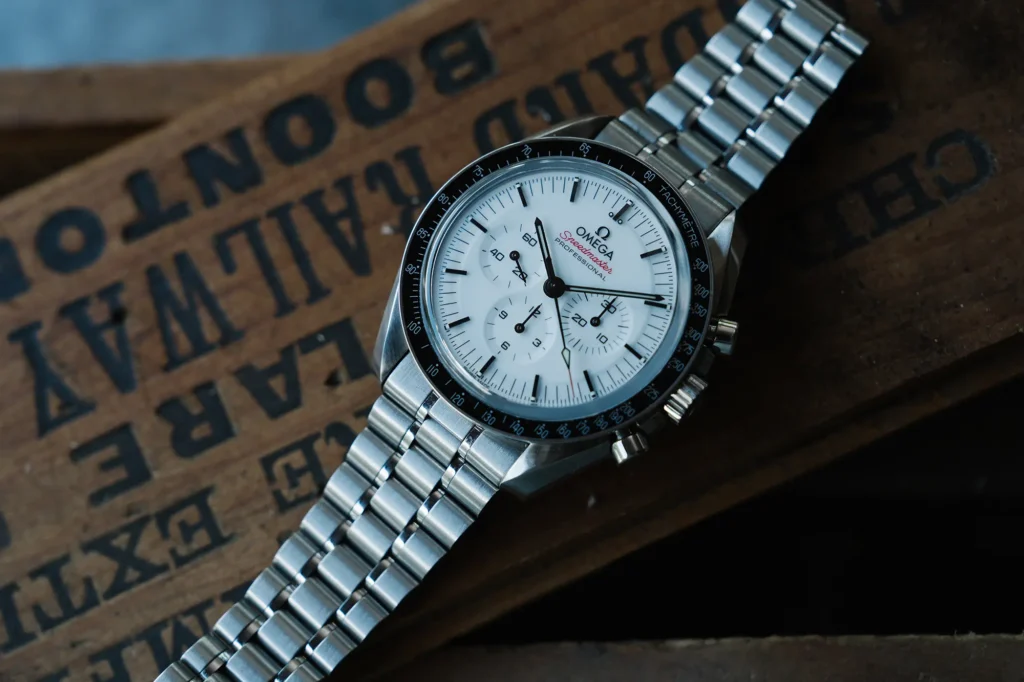
That changed earlier this year with the release of a new steel Speedmaster Moonwatch Professional with a white dial as a standard production piece. This was far from the first appearance of a white dial on a Speedmaster, or even on a Moonwatch, but it is the first to see standard production in steel as a permanent part of the collection alongside a black dial counterpart. There is no partnership or collaboration element here. This is a new core part of the Moonwatch collection.
There were two variations of the new Speedmaster when it released in 2021: one with a sapphire crystal, and one with an acrylic crystal. But the changes went a bit deeper than that. The sapphire model had a few touches that the acrylic lacked, including subtle polished center links worked into the bracelet, an applied polished logo on the dial, and a sapphire exhibition caseback through which you could view the new 3861 movement within. It was an ever so slightly more formal version of the base watch, and the new white dial picks up these same flourishes, as there is no acrylic reference available here.
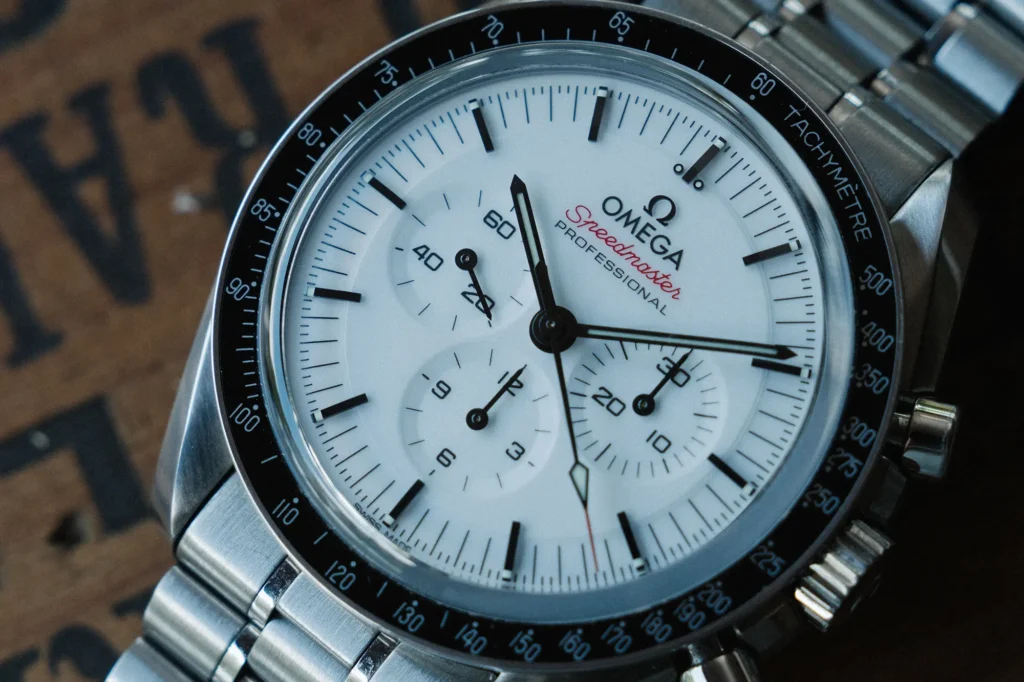
Arguably, the biggest change with the new model was the move to the 3861 caliber, which made its debut a few years earlier in special edition references. This replaced the long running 1861 caliber, which had been in service in some form or another for nearly 50 years. The 3861 retains a familiar architecture, using a cam and lever system for the chronograph works, though it did welcome a co-axial escapement with silicon balance spring within an adjustable mass balance wheel. It was also Master Chronometer certified, allowing for 0/+5 seconds of accuracy per day.
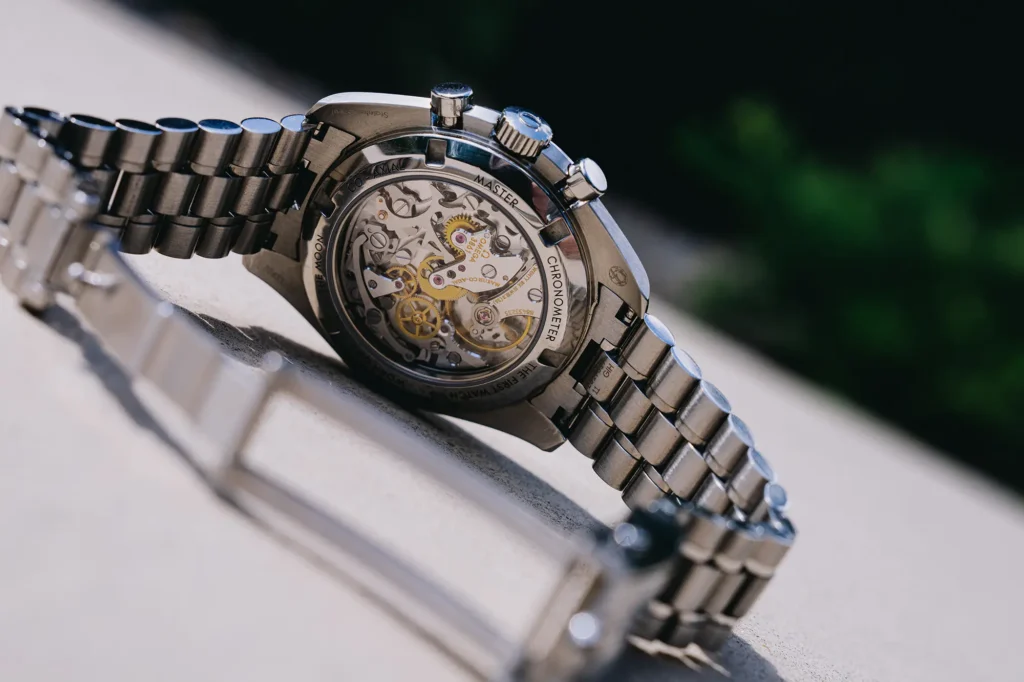
This was a big and likely inevitable step for the Moonwatch, and while it wasn’t celebrated by all, it’s a sensible move from Omega as they look to solidify the collection for generations to come. On paper the movement was the biggest talking point, but in person, the real story was the new bracelet replacing a badly aged design in the outgoing model. This new bracelet instantly made the Speedmaster a more premium feeling watch on the wrist, and looked far more mature than anything seen prior on a Speedmaster. Shorter links and a 5mm taper provided an exceptional experience on the wrist, and this was the sole factor that took the Speedmaster from a watch that I admired from afar, to a watch that I’d gladly welcome into my collection. And that’s exactly what I did.
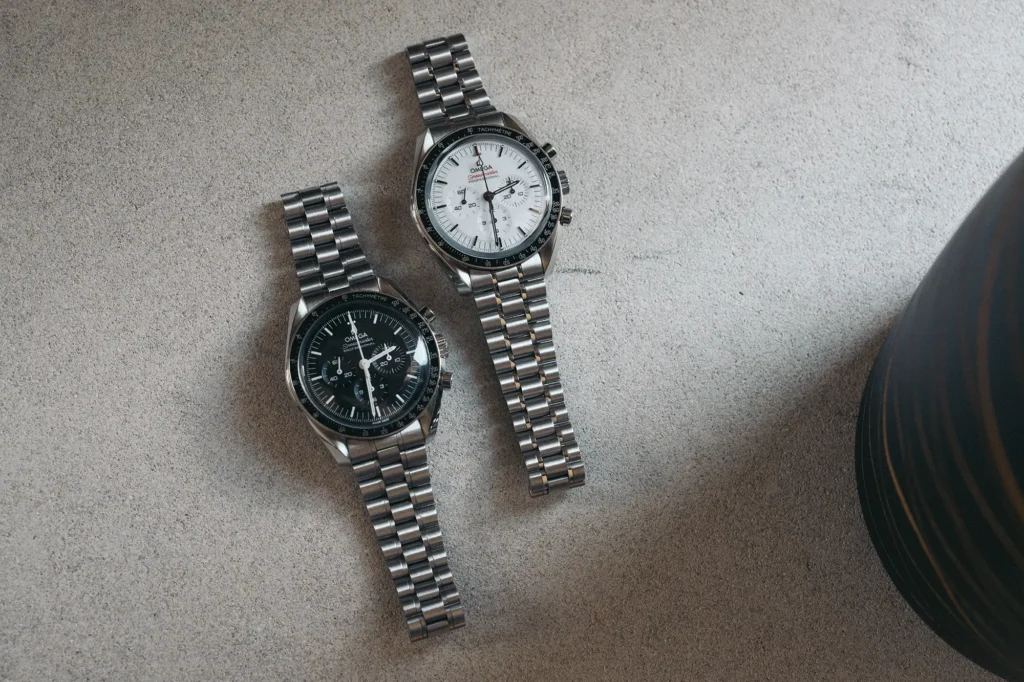
The ‘throwback’ details on the dial and bezel were just icing on top. The dot over 90 on the tachymeter was a nod to the enthusiast base, and the stepped dial brought some welcome depth under the crystal. Each of these details has been retained in the new white dial Moonwatch, and the dial absolutely sings as a result.
White dials can be tricky to pull off properly, but Omega has done just that. This is a glossy lacquer dial on paper, but in person it doesn’t read as glossy in most conditions. Rather, it’s somewhere close to satin, and most importantly, it doesn’t compromise the sporty look of the watch. Also aiding in that department is the use of black hour markers and hands, which offers a highly legible experience in any lighting condition. This is the biggest shortcoming of other white dials, such as the one seen on the Rolex Daytona, which uses polished markers that can get lost easily depending on the viewing angle and lighting conditions.
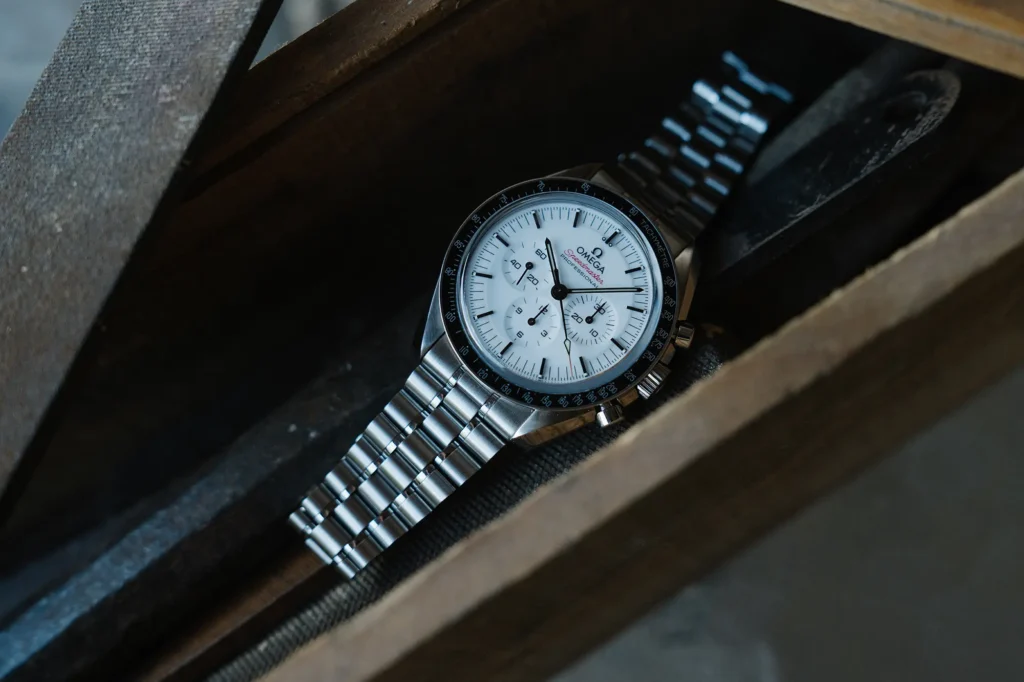
Side note: how hard would a Daytona with black hour markers within a brushed case go?
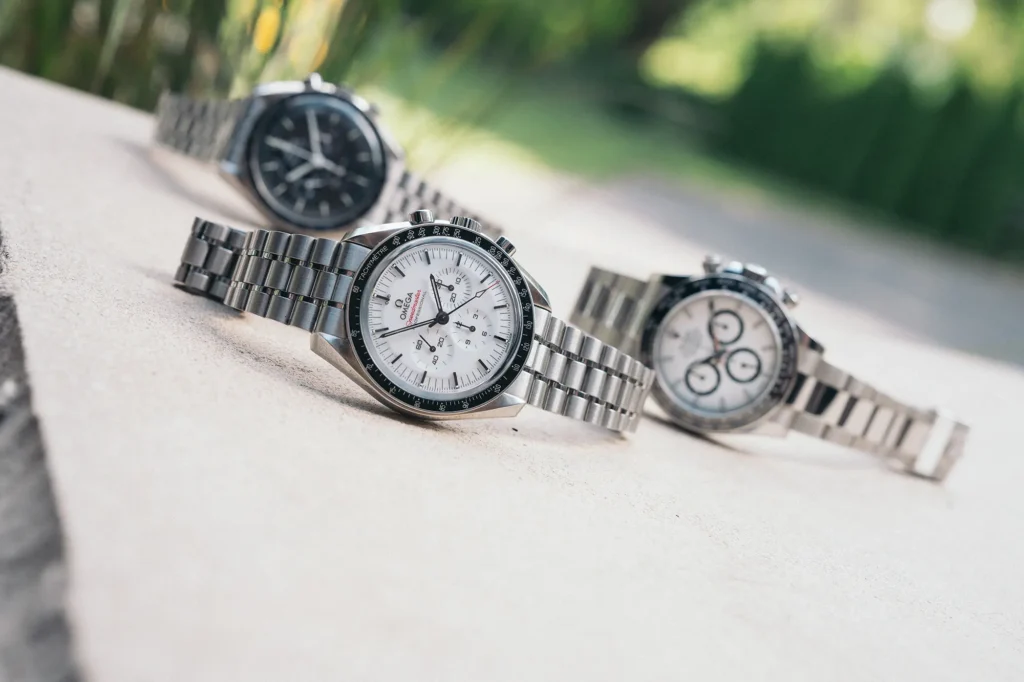
The white dial works incredibly well here, and that shouldn’t come as a surprise as we’ve seen watches like the Alaska Project and even recent canopus gold references more recently that work really, really well with this design. This Moonwatch formalizes that feeling, and doesn’t lose sight of what the Speedmaster is in the process. I am grateful that Omega refrained from doing a black infill on the subdials here for a panda look (last seen on the 2020 Olympics LE Speedmaster). The pure white execution brings all the ridges to life, and keeps a very clean aesthetic in the process.
There is only one tradeoff made with this dial, and that is lack of lume. The black hour markers are applied bars, and they each get a small application of lume at their tip. It’s a tradeoff I welcome for the full black experience of the hour markers, however, and in a pinch, the lume that is there will do the trick just well enough.
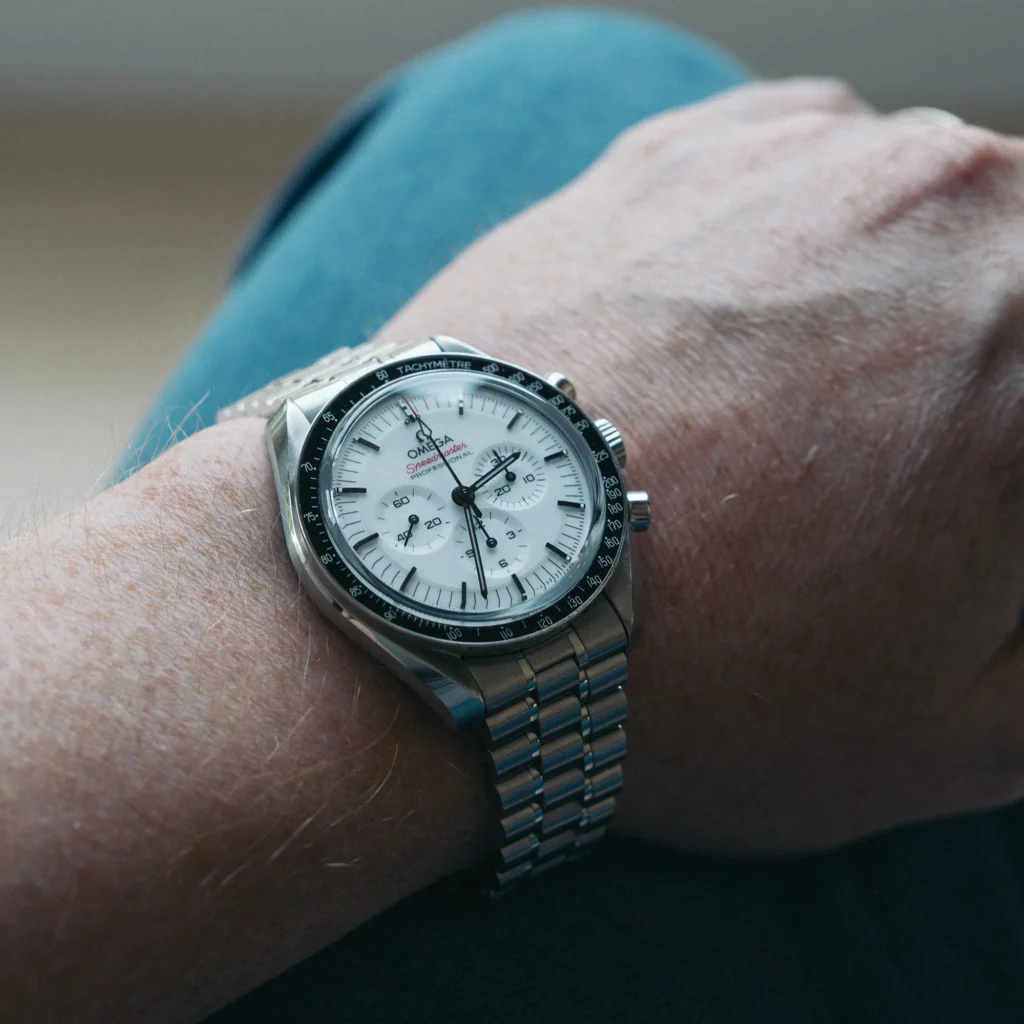
The dial is set within the classic 42mm twisted lug steel case that measures just over 13mm in thickness, and 47.5mm from lug to lug. Yes, it’s a touch large, but it wears smaller than you might think. The bracelet does get the quick adjust system that Omega brought out last year, which provides about 5mm of extension at the press of a button. Most importantly, it doesn’t compromise the bulk or aesthetic of the clasp.
Overall this is a remarkably effective Moonwatch that presents a fresh look without alienating the core tenets of the collection. This feels like a Moonwatch through and through, and feels like a natural partner to the existing black dial references. It feels slightly more formal than the black dial, with a different enough personality, but never feels out of place. This is exactly the kind of Speedmaster expansion that I can get on board with.
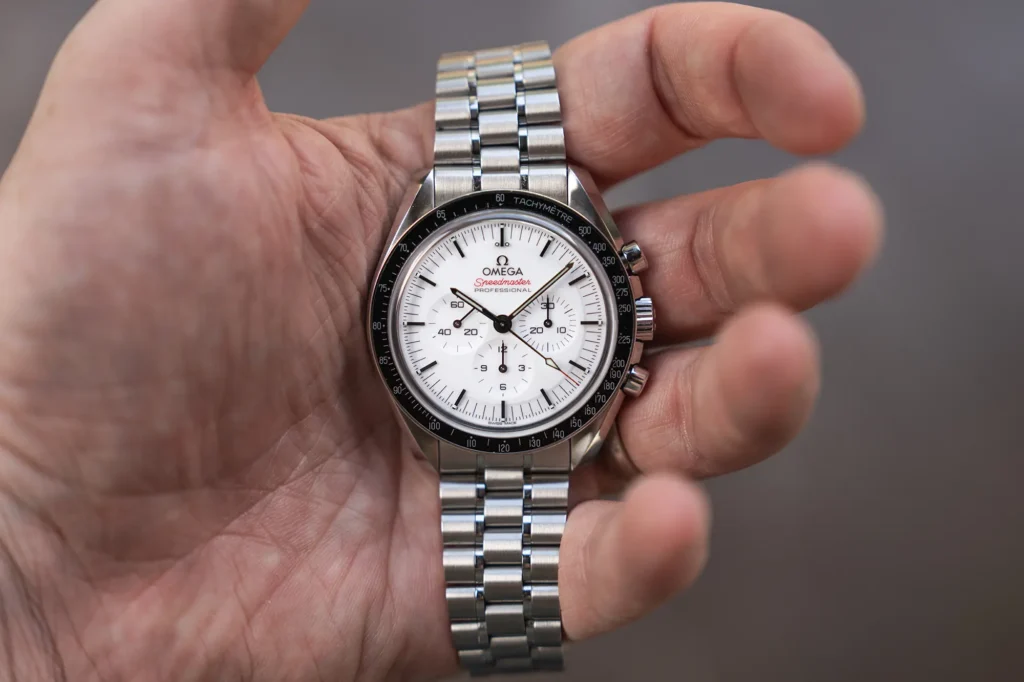
The new Speedmaster with white dial is priced at $8,100 on its bracelet, which is the recommended configuration here. Seriously, even if you plan on wearing this watch with other straps, this is a bracelet you’ll want in your back pocket. This Speedmaster is available now, though stocks seem to be limited. Keep an eye out for that hopefully normalizing in the coming months. Omega

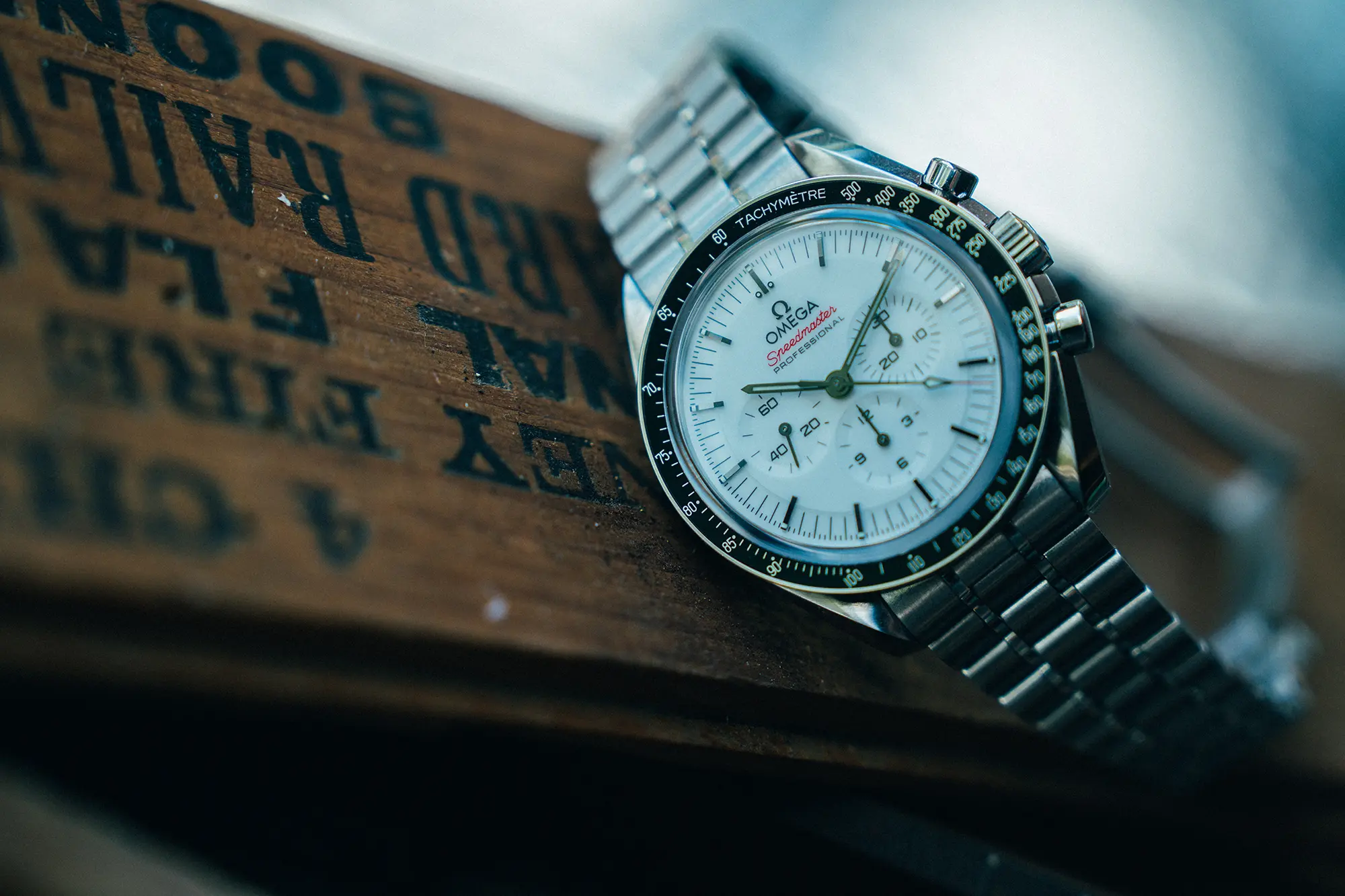
Comments
One response to “Video: The Omega Speedmaster Moonwatch Professional In White”
[…] Episode 22 with Thomas CalaraOmega Speedmaster White […]